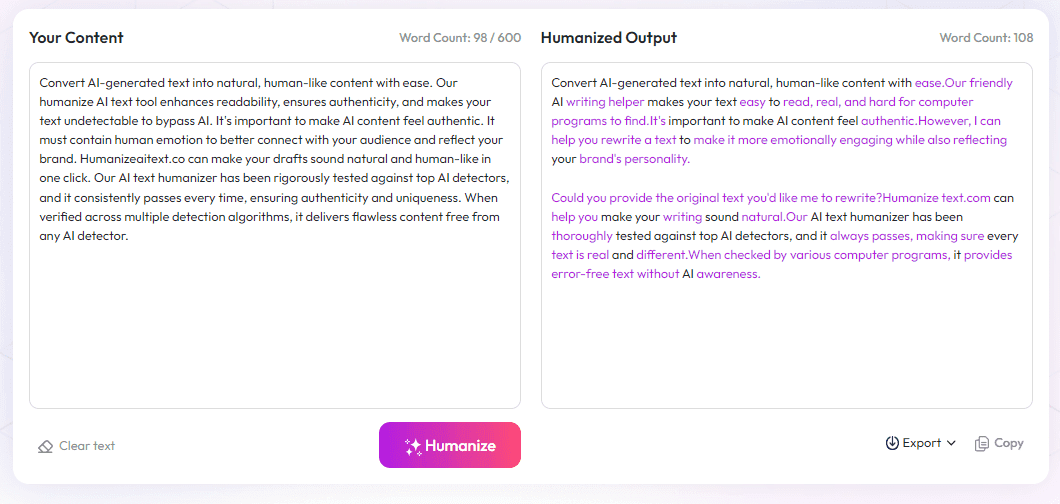Table of Contents
Many people struggle with understanding how to create a clear and engaging blog outline. If that’s you, don’t worry—you’re not alone. Stick with me, and I’ll show you a simple method to plan your posts that helps you stay organized and write more confidently. By the end, you'll have a solid blueprint to keep your ideas flowing smoothly and make your writing stand out.
Key Takeaways
Key Takeaways
- Start with a specific topic and clear goal to make your book self-publishing guide focused and easy to follow.
- Use simple, descriptive headings and subheadings to organize steps from preparing your manuscript to marketing.
- Begin each section with a main takeaway sentence that answers what needs to be done next, helping readers follow through.
- Add visual cues like images or charts in your outline to make the process more engaging and easier to develop later.
- Finish with a clear call to action to motivate readers to start their publishing journey now.
- Including FAQs improves usefulness, helps answer common doubts, and increases chances of appearing in search snippets.
- Keep your outline concise, logical, and easy to follow, which helps you stay organized and write confidently.
- Use real data, such as social media user numbers, to support your content and make your strategy more effective.
- Optimize your content with relevant keywords for better search ranking and visibility in your niche.
- Plan your publishing schedule consistently and use targeted promotion channels like social media to reach your audience.
- Regularly review your results and adjust your strategies based on performance data and market changes.
- Show success stories and examples to inspire confidence and motivate others to start self-publishing.

Start with a Clear Topic and Goal
To create content that ranks well, you need to begin with a focused question or problem. For example, if you want your article to appear as a featured snippet about how to write a book without an agent, ask: "What are the essential steps to publish a book independently?"
Choosing a narrow angle helps your post stand out. Instead of general advice, narrow it down to specifics like "How to self-publish a coloring book on Amazon." This makes your content more relevant and easier for Google to recognize as a quick, authoritative answer.
Clearly defining your goal guides how you organize the outline. If your aim is to teach readers how to quickly start publishing, the outline should focus on actionable steps that lead to immediate results.
Organize Main Points Using Clear Headings
Use descriptive H2 headings that describe each key point directly related to your main question. For instance, in a post about self-publishing, headings like "Preparing Your Manuscript" or "Publishing on Amazon KDP" make your structure straightforward.
Break down each section further with H3 subheadings. For example, under "Preparing Your Manuscript," add "Editing Tips" and "Formatting Best Practices." This helps readers navigate your content easily and find what they need quickly.
Arrange sections logically — start from initial planning, move through production steps, and finish with marketing tips. A smooth flow keeps the reader engaged and on track toward their goal.
Begin Each Section with a Key Takeaway
Kick off every main part with a sentence that answers that section's question. For example, under "How to Publish on Amazon KDP," start with: "You need to prepare your manuscript and set up an account on KDP to publish your book yourself."
Follow this with bullet points or short details like:
- Ensure your manuscript is edited and formatted correctly.
- Create a compelling cover design.
- Adjust pricing settings on Kindle Direct Publishing.
This approach makes sections outcome-focused, giving readers clear, actionable tips from the start.
Include Visual Cues and Data Spots
Mark where to add visual content like charts, images, or quotes to make your outline more engaging. For instance, next to "Formatting Your Book," you could indicate: "Add a step-by-step infographic on setting margins and fonts."
Using these cues helps in developing a lively, informative post. For example, including a sample chart of royalty rates on different publishing platforms can clarify the differences and give readers valuable data at a glance. This makes your content easier to develop and more attractive to readers.
Wrap Up with a Clear Call to Action
Always finish with what your readers should do next. If your article is about self-publishing, encourage them to: "Try uploading your final manuscript on Amazon KDP today to start your publishing journey."
Make the CTA straightforward and motivating — for example, suggest downloading a free checklist or signing up for a publishing webinar. Clear steps keep your audience engaged and ready to act.
Optionally, Address FAQs or Common Questions
Adding a FAQs section can solve common doubts, like "What is the best way to format an ebook?" or "How much does publishing on Amazon cost?"
Answering these boosts your content’s usefulness and helps it rank for related queries, improving your chances of appearing in a featured snippet.
Tips for a Strong Blog Post Outline
- Keep your outline concise but detailed enough so you know exactly what to write.
- Review the flow to avoid repetition or digressions that can confuse readers.
- Use short headings and bullet points to make the outline easy to follow and write from.
For instance, in the context of Indonesia's growing social media use — with 143 million social media users in January 2025 — understanding how to leverage these platforms can open new opportunities for promotion and engagement. Tips on creating shareable content or targeted ads can boost your outreach effectively. Additionally, diving into specific demographics, such as active users aged 18 and above, helps customize your message for better impact. If you're considering content marketing, exploring how to create engaging visuals or data visuals can make your posts more attractive — mark these areas clearly in your outline to develop them fully later.

Step 5: Use Data to Support Your Content Strategy
Gathering real-time data helps you understand what topics are trending and what your audience cares about.
Use tools like (https://automateed.com/amazon-kdp-niche-research-tool/) or Google Trends to identify rising interests, especially in markets like Indonesia where social media use is growing rapidly.
Incorporate relevant statistics, such as Indonesia's social media users reaching 143 million in January 2025, to back up your claims and boost credibility.
Including data spots like demographic breakdowns or platform growth figures can help you tailor your content and marketing efforts effectively.
Step 6: Optimize Your Content for Search Engines
Use keyword research relevant to your niche — think about what phrases your target readers search for.
Integrate these keywords naturally into your headings, subheadings, and body text to improve SEO.
Look into what categories perform well on Amazon or other platforms, such as "self-help" or "children's books," and align your keywords accordingly.
Don't forget to optimize your metadata, including titles and descriptions, to draw clicks and improve your ranking.
Step 7: Plan Your Content Publishing Schedule
Create a consistent schedule for publishing blog posts, articles, or book releases to keep your audience engaged.
Consistency builds authority and keeps Google and other platforms ranking your content higher over time.
Use insights on audience activity—like peak social media usage times, which are increasing among certain age groups in Indonesia—to time your posts.
Tools like (https://automateed.com/best-website-builder-for-authors/) can help you identify when your followers are most active.
Step 8: Promote Using Targeted Channels
Leverage social media platforms popular in Indonesia, such as Instagram and TikTok, where active users are reaching over 143 million.
Create content that resonates with these demographics, especially the 18+ age group which has shown a 1.9% increase in users since last year.
Use targeted ads and collaborations with local influencers to extend your reach.
Consider creating shareable content using tips from (https://automateed.com/funny-writing-prompts-for-kids/) or culturally relevant themes to boost engagement.
Step 9: Regularly Review and Adjust Your Strategies
Track your content's performance using analytics tools to see what sticks and what doesn’t.
Adjust your keywords, publishing times, and promotion methods based on real data feedback.
Stay aware of market shifts, like the gradual increase in social media ad reach (+0.3% between October 2024 and January 2025), to optimize your ad spend.
Don't be afraid to experiment with different formats or channels to find what works best for your niche and audience.
Step 10: Highlight Success Stories and Case Studies
Sharing examples of authors or entrepreneurs who successfully published without an agent helps inspire your readers.
Look into local success stories in Indonesia, where understanding demographic trends can give them an edge.
These real-world examples motivate others to take actionable steps, like starting their own publishing journey or marketing campaign.
Links to (https://automateed.com/how-to-get-a-book-published-without-an-agent/) can provide additional guidance and inspire confidence.
FAQs
Select a specific question or problem to address. Focus on an angle that makes your content unique, and set a clear goal to guide the development of your outline.
Using descriptive headings helps break down content into manageable sections, making it easier for readers to follow and find key information quickly.
Starting with a main idea gives readers a quick understanding of the section, while supporting details help them grasp actionable steps or ideas easily.
Visual cues such as charts, images, or quotes highlight key points and make the outline more engaging, aiding in understanding and guiding content development.



